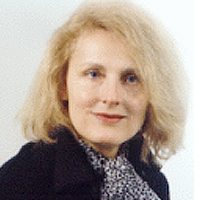Evolution of anaesthesia in transapical aortic valve implantation Running head: Anaesthesia and transcatheter valve
Published on: 20th September, 2017
OCLC Number/Unique Identifier: 7317654731
The Transcatheter Aortic Valve Implantation (TAVI) had emerged more and more in the last twenty years. According to the scientific literature, this is an approved, suitable and alternative therapeutic choice to conventional surgery for aortic valve disease in high risk patients. The most of patients are octogenarians or nonagenarians, with multiple comorbidities (neurological,vascular,oncologic, haematological, etc). The evolution of TAVI techniques and its devices have improved the quality of results and reduced the peri- and post-procedural complications. Cardiac anaesthesia and analgesia in TAVI patients is very important and fundamental to a quickly and complete clinical restoring after the procedure. An optimal balance of drugs and peri-procedural management could reduce the neurological events (such as delirium), the days of hospitalization and the admission of intensive care unit. According to our experience in transapical approach, the low dose of propofol and desflurane allowed to optimal cardiac anaesthesia and rapid mechanical ventilation weaning in complex patient undergone to transcatheter valve implantation with transapical approach. Moreover, our protocol reduced considerably the incidence of perioperative delirium.
Quantification of the pressures generated during insertion of an epidural needle in labouring women of varying body mass indices
Published on: 1st December, 2017
OCLC Number/Unique Identifier: 7317597133
Objective: The primary aim of this study was to measure pressure generated on a Tuohy needle during the epidural procedure in labouring women of varying body mass indices (BMI) with a view of utilising the data for the future development of a high fidelity epidural simulator. High-fidelity epidural simulators have a role in improving training and safety but current simulators lack a realistic experience and can be improved.
Methods: This study was approved by the National Research Ethics Service Committee South Central, Portsmouth (REC reference 11/SC/0196). After informed consent epidural needle insertion pressure was measured using a Portex 16-gauge Tuohy needle, loss-of-resistance syringe, a three-way tap, pressure transducer and a custom-designed wireless transmitter. This was performed in four groups of labouring women, stratified according to BMI kg/m2: 18-24.9; 25-34.9; 35-44.9 and >=45. One-way ANOVA was used to compare difference in needle insertion pressure between the BMI groups. A paired t-test was performed between BMI group 18-24.9 and the three other BMI groups. Ultrasound images of the lumbar spine were undertaken prior to the epidural procedure and lumbar magnetic resonance imaging (MRI) was performed within 72h post-delivery. These images will be used in the development of a high fidelity epidural simulator.
Results: The mean epidural needle insertion pressure of labouring women with BMI 18-24.9 was 461mmHg; BMI 25-34.9 was 430mmHg; BMI 35-44.9 was 415mmHg and BMI >=45 was 376mmHg, (p=0.52).
Conclusion: Although statistically insignificant, the study did show a decreasing trend of epidural insertion pressure with increasing body mass indices.
Anesthesia for epilepsy surgery
Published on: 16th January, 2023
Anesthesia for neurosurgery, “neuro-anesthesia”, involves techniques, drugs, monitoring and objectives as diverse as the area of surgical activity is vast (surgery for vascular alterations, tumors, craniostenosis, spine, epilepsy, etc.).
Anesthesia mumps: a case report
Published on: 10th February, 2023
A 25 years old pregnant woman had a painful labor in her 38th week of pregnancy. Because of a previous delivery by a cesarean section, she underwent a second cesarean section. Her past medical and family history was unimportant. We performed the surgery under spinal anesthesia. The surgery was uneventful and the baby was in a good health. After 9 hours of surgery, she complained of painless swelling in the parotid glands. Physical examination and laboratories were normal. We started rehydration with normal saline and one dose of hydrocortisone (100 mg IV route). Close monitoring showed no problems in swallowing or any purulent discharge. Two days later, we had a complete resolution of the swelling. We discharged the woman with her child with no complaints. Our case is one of the rare cases of anesthesia mumps after spinal anesthesia. Physicians should be careful in considering such rare cases. Early diagnosis and management is the key.
Deciphering the Rosetta Stone - Trans-Mitral Doppler Patterns for a Simplified Study of Left Ventricular Systolic Dysfunction
Published on: 30th August, 2023
There is a renewed interest in heart failure treatments. With this, there is an increasing interest in heart failure with preserved ejection fraction. Trans-mitral Doppler is commonly used in the assessment of ‘diastolic’ function. It is fashionable to discuss diastolic dysfunction and diastology with the result that the more important systolic dysfunction has become passé. The current literature equates trans-mitral Doppler patterns to diastolic function when actually it is more relevant in systolic dysfunction. This article is an attempt to correct this flawed perception of trans-mitral Doppler.
A witnessed intra-operative blood transfusion-related air embolism under epidural anaesthesia for vesicovaginal fistula repair
Published on: 21st June, 2022
OCLC Number/Unique Identifier: 9554643394
The transfusion is a normal life-saving procedure conducted commonly by the nurses at the prescription of the attending physician or the emergency physicians. It is generally a safe procedure if guidelines for processing and administering are carefully followed. Blood transfusion is an independent risk factor for morbidity and mortality and major complications arising from transfusion are generally rare. We present a case of a mild case of iatrogenic air embolism exacerbated by pressure infusion for a patient who had undergone an exploratory laparotomy for an iatrogenic fistula repair under epidural anesthesia.
A case report of hepatic actinomycosis: A rare form of presentation
Published on: 20th September, 2022
Hepatic Actinomycosis (HA) is a very rare abdominal actinomycosis that can be confused with hepatic involvement due to a tumor. Liver involvement can occur from an abdominal focus or by blood dissemination from another focus. This disease is much more common in men between 50 - 70 years and in a situation of immunosuppression. Symptoms are nonspecific and diagnosis includes histopathology, cultures, and imaging test. Treatment includes prolonged antibiotic therapy with antibiotics such as penicillin and drainage of abscesses.We present a case of a 54-year-old man patient with a record of three years of chronic pancreatitis of probably alcoholic origin, who developed hepatic actinomycosis, requiring drainage of liver abscesses and directed antibiotic treatment.
To evaluate the stress response to tracheal intubation by macintosh laryngoscope and intubating laryngeal mask airway
Published on: 19th December, 2022
Aim: To evaluate the hemodynamic changes and side effects during endotracheal intubation with Macintosh laryngoscope and intubating laryngeal mask airway.Materials and methods: A prospective, simple randomized, comparative study on 100 patients 18 years - 60 years of age, divided into two groups: Group A comprising intubation with Macintosh laryngoscope and Group B intubation through ILMA.Results: Total intubation time (in seconds) of group A was 24.38 + 3.26 seconds and of the group, B was 42.94 + 1.24 seconds. At 2,4 and 6, a higher rise in mean heart rate was noted in group A (p < 0.05). At 2,4,6 and 8 minutes difference in mean SBP and mean DBP of the two groups was statistically significant with a p - value of < 0.05 with a significant increase of mean SBP and mean DBP in patients of group A. The difference for all complications was not significant between the two groups.Conclusion: Intubation via intubating laryngeal mask airway can be done as an alternative to direct laryngoscopy using a Macintosh blade as intubation via intubating laryngeal mask airway has shown to have lesser hemodynamic changes.
Anaesthetic management of an elderly patient with ischaemic heart disease and previous MI undergoing elective inguinal hernia repair: Case report
Published on: 25th May, 2020
OCLC Number/Unique Identifier: 8615126196
Ischemic heart disease may occur in isolation, or in combination with the pathological process of vascular ageing, arteriosclerosis. These two conditions have differing impacts on the haemodynamic changes in response to anaesthesia and surgery. Hypertension is not a feature of ischemic heart disease, and vice versa, but where the two conditions co-exist, hypertension aggravates and accelerates the pathological processes of ischemic heart disease. Patients older than 40 yrs. presenting for anaesthesia and surgery must therefore be considered at risk of any combination of these three conditions. Anaesthetic techniques must also be chosen to minimize haemodynamic changes which in the normal healthy patient cause no serious morbidity, but which, in the patient with ischemic heart disease, can lead to serious morbidity or death. Here we report a 70 years old (BMI of 23.3) elderly, hypertensive Male patient with ischemic heart disease with previous MI (EF of 40% - 5%) undergoing elective Inguinal hernia repair. We Opted Spinal anesthesia over General anaesthesia as it should be an asset in cardiac patients undergoing non-cardiac lower abdominal surgeries to reduce preload and after load, stress response, coagulation responses, improves coronary perfusion, provides better postoperative analgesia, reduces incidence of perioperative MI, maintains myocardial oxygen supply demand ratio and avoids harmful effects of GA such as hypotention due to intravenous induction drugs, tachycardia and hypertension due to pressor response during direct laryngoscopy and tracheal intubation.
The choice of optimal modern muscle relaxants (rocuronium bromide, atracurium besilate and cisatracurius besilate) in one-day surgery in children
Published on: 15th June, 2020
OCLC Number/Unique Identifier: 8633140096
The choice of the optimal muscle relaxant in one-day surgery in children with “small” surgical interventions remains relevant to this day. In modern pediatric surgery, the requirements for the quality of muscle relaxation are highest. However, along with the effectiveness of the drug, its duration and controllability of the action, as well as the safety of use, are important [1-7].
The aim of the study: To determine the pharmacoeconomic rationale for the rational use of muscle relaxants, depending on the duration of operations in one-day surgery in children.
Material and research methods: The study was conducted in surgical clinics of the Azerbaijan Medical University. The study included 156 children who were operated on routinely from 0 to 16 years old (risk of anesthesia I-II ASA), who used combined endotracheal anesthesia during surgery. Based on the requirements of the GCP international program (Good Clinical Practice), the inclusion of children in the study was carried out only after the written consent of the parents. The studied patients were divided into 3 groups depending on the muscle relaxant used: IA (n = 52) - rocuronium bromide (esmeron), IB (n = 52) - atracurium besilate (tracrium), IC (n = 52) - cisatracurius besilate (nimbex). Depending on the type of general anesthesia, these groups were also divided into 2 subgroups: anesthesia based on isoflurane + fentanyl ″ + iso ″ and anesthesia based on sevoflurane + fentanyl ″ + sev ″. The main groups were also divided into 2 age subgroups: children under 2 years of age – IA1, IB1, IC1 and children from 2 to 16 years old – IA2, IB2, IC2.
















